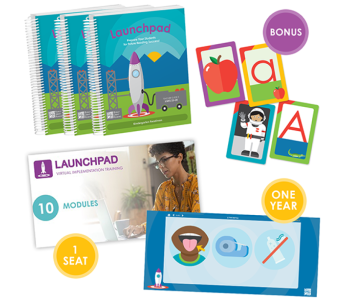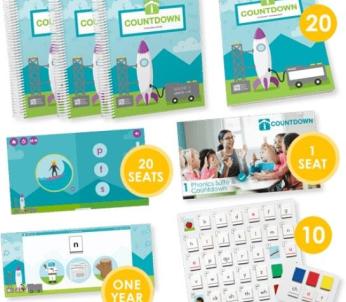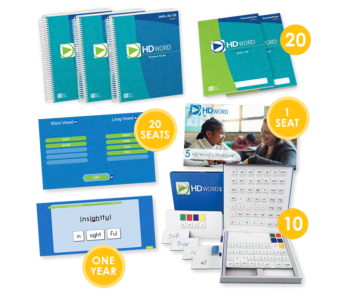Blast for 1st Grade
Blast Off to Reading Mastery
Blast accelerates first-grade reading development with targeted, systematic instruction. Through engaging, research-backed, multi-sensory lessons, the program builds decoding skills, fluency, and confidence in young readers.
Blast’s structured lessons and interactive activities help first graders develop critical reading skills, including strong decoding, fluency with high-frequency words, and strategies for tackling new words. The program also includes Really Great Handwriting to refine print skills, with minimal prep time and built-in professional development for teachers.
Teacher Guide Set
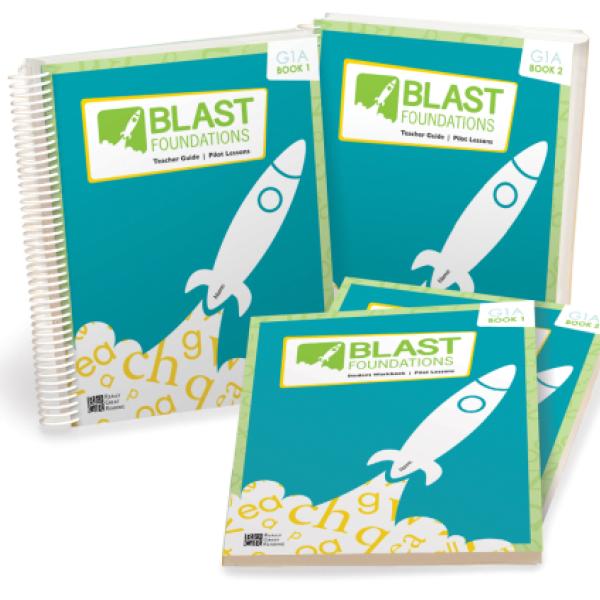
- Scripted, ready-to-teach lesson plans
- Thorough explanation of concepts, routines, and procedures
- Options for adjusting and differentiating instruction
- Embedded, incremental professional development—no phonological awareness or phonics background needed!
- Includes lesson plan books, vowel posters, student workbooks and kits
Blast Online
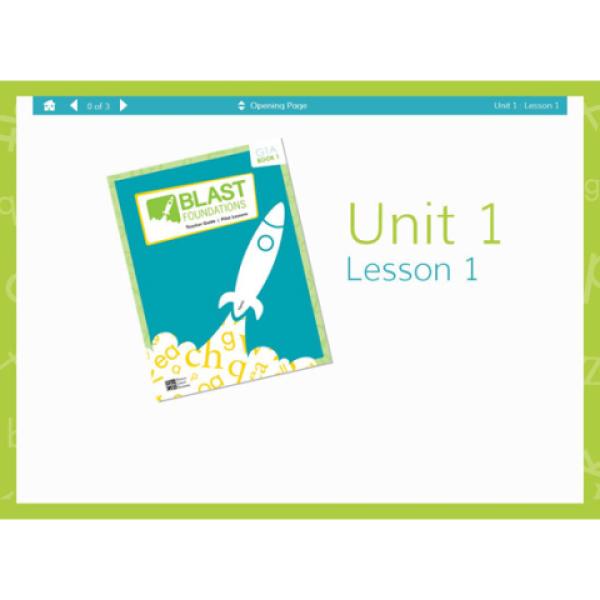
Blast Online reduces prep time while enhancing instructional precision.
- Dynamic, image-based presentation tool that boosts classroom engagement and learning
- Delivers clear, effective instruction with vibrant visuals and real-time interactive features
- Compatible with interactive whiteboards, projectors, tablets, laptops, and computers
- BONUS: Access a library of activities, supplements, and professional development resources through The Supply Room
Virtual Training for Educators
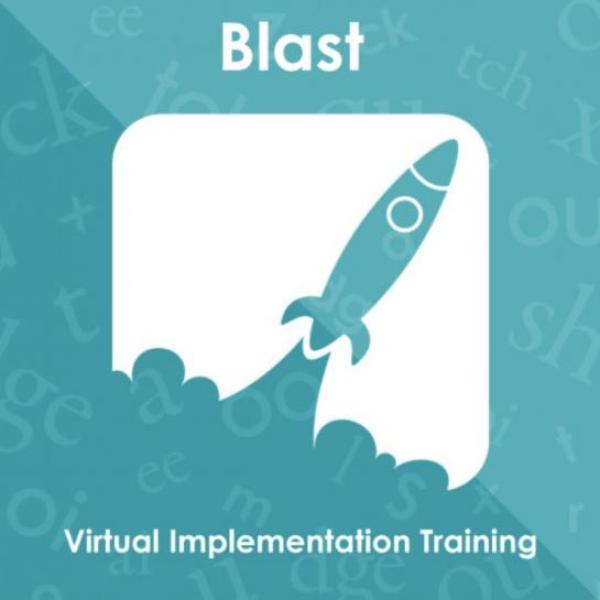
Virtual Training for Educators
Unlock Blast’s full potential with interactive, self-paced training. The implementation training is designed to fit seamlessly into educators' busy schedules, regardless of their prior knowledge of the Science of Reading. With its interactive and virtual format, it ensures a confident and powerful start with Blast, helping educators feel fully prepared for success.
The Playgrounds
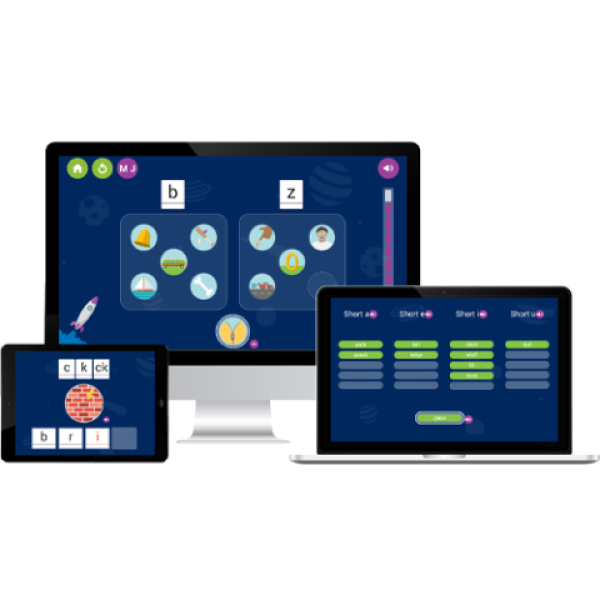
Our independent student practice tools solidify classroom learning, merge practice and assessment, and equip teachers with detailed reporting and progress-monitoring.
The Reading Playground:
- Helps students independently practice foundational literacy skills and offers additional reinforcement opportunities
- Is a fun, interactive tool featuring a variety of assessment options along with comprehensive reporting that let teachers pinpoint students’ strengths and areas for improvement
- Provides instructions and scaffolds in English and Spanish for better understanding, accurate progress tracking, and documentation of language accommodations
The Vocabulary Playground:
- Is a dynamic practice platform that simulates the natural process of vocabulary acquisition through rich, contextual encounters with words
- Not only enriches vocabulary but also enhances oral language skills, builds background knowledge, and sharpens inferencing and critical thinking abilities
Decodables
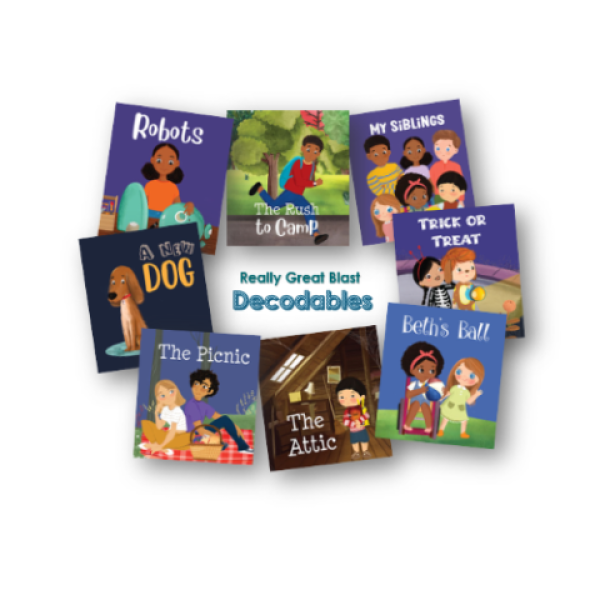
Decodable books are a critical tool for beginning and struggling readers, seamlessly integrating with phonics instruction to reinforce both decoding skills and early comprehension. These engaging books feature vibrant illustrations and skill-level-appropriate content, offering targeted practice that builds essential reading confidence and fluency. By providing repeated exposure to newly learned phonics patterns, our decodable books ensure students can apply their skills in meaningful contexts. Available in both digital and printable formats, they make high-quality literacy experiences accessible in any learning environment—at home or in the classroom. With decodable books, every child gains the support needed to become a successful, independent reader.

- Scripted, ready-to-teach lesson plans
- Thorough explanation of concepts, routines, and procedures
- Options for adjusting and differentiating instruction
- Embedded, incremental professional development—no phonological awareness or phonics background needed!
- Includes lesson plan books, vowel posters, student workbooks and kits

Blast Online reduces prep time while enhancing instructional precision.
- Dynamic, image-based presentation tool that boosts classroom engagement and learning
- Delivers clear, effective instruction with vibrant visuals and real-time interactive features
- Compatible with interactive whiteboards, projectors, tablets, laptops, and computers
- BONUS: Access a library of activities, supplements, and professional development resources through The Supply Room

Virtual Training for Educators
Unlock Blast’s full potential with interactive, self-paced training. The implementation training is designed to fit seamlessly into educators' busy schedules, regardless of their prior knowledge of the Science of Reading. With its interactive and virtual format, it ensures a confident and powerful start with Blast, helping educators feel fully prepared for success.

Our independent student practice tools solidify classroom learning, merge practice and assessment, and equip teachers with detailed reporting and progress-monitoring.
The Reading Playground:
- Helps students independently practice foundational literacy skills and offers additional reinforcement opportunities
- Is a fun, interactive tool featuring a variety of assessment options along with comprehensive reporting that let teachers pinpoint students’ strengths and areas for improvement
- Provides instructions and scaffolds in English and Spanish for better understanding, accurate progress tracking, and documentation of language accommodations
The Vocabulary Playground:
- Is a dynamic practice platform that simulates the natural process of vocabulary acquisition through rich, contextual encounters with words
- Not only enriches vocabulary but also enhances oral language skills, builds background knowledge, and sharpens inferencing and critical thinking abilities

Decodable books are a critical tool for beginning and struggling readers, seamlessly integrating with phonics instruction to reinforce both decoding skills and early comprehension. These engaging books feature vibrant illustrations and skill-level-appropriate content, offering targeted practice that builds essential reading confidence and fluency. By providing repeated exposure to newly learned phonics patterns, our decodable books ensure students can apply their skills in meaningful contexts. Available in both digital and printable formats, they make high-quality literacy experiences accessible in any learning environment—at home or in the classroom. With decodable books, every child gains the support needed to become a successful, independent reader.
Builds decoding skills through targeted, sequential lessons, cultivating a growth mindset for every learner.
The program’s Playgrounds, a play-based, digital platform, offers individualized practice and reinforces concepts and skills taught through teacher-led instruction.
Covers foundational skills through a cumulative approach, while data and reporting inform instruction and highlight students’ areas of improvement.
Hands-on kits with visual and auditory supports engage students fully.
Easy-to-teach lessons and digital tools minimize preparation and streamline instruction.
Embedded professional learning ensures teachers feel prepared and develops their capacity.

